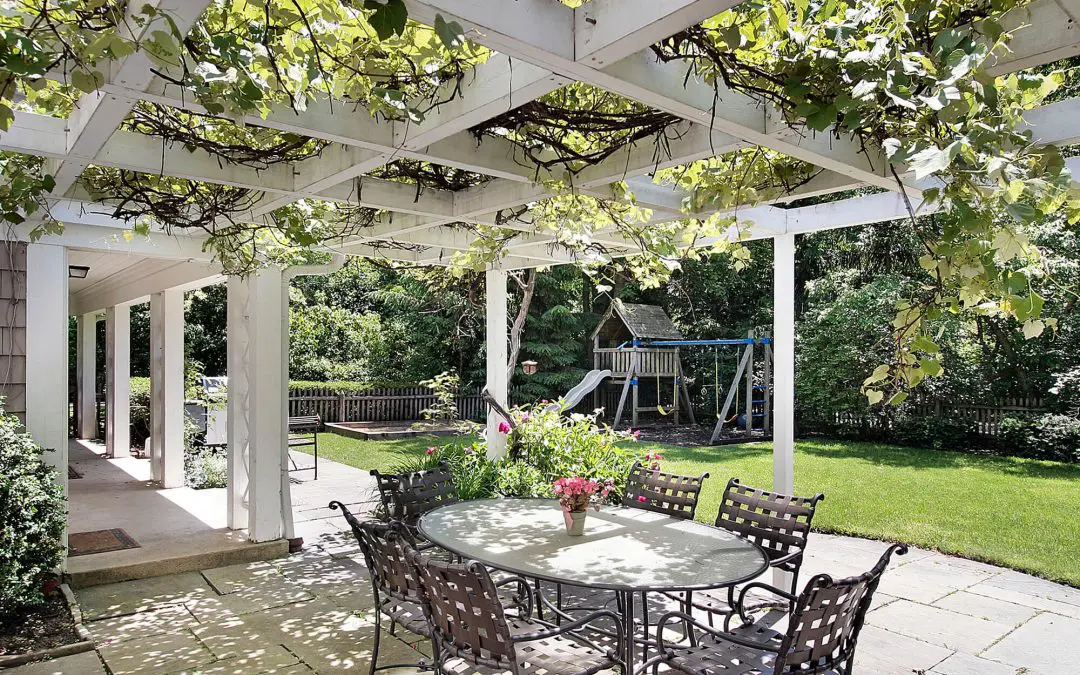A patio can transform your outdoor space into a functional, inviting retreat for relaxing, entertaining, and enjoying nature. But with so many materials available, choosing the right one can feel overwhelming. The best patio material depends on your budget, climate, maintenance preferences, and aesthetic vision. Let’s explore the most popular patio materials and their advantages so you can make an informed decision.
Concrete Patio Materials
Concrete is one of the most widely used patio materials, and for good reason. It’s durable, versatile, and budget-friendly. A poured concrete patio provides a smooth, solid surface that can last for decades with proper care. It can also be stamped, stained, or textured to mimic more expensive materials like brick or stone.
One of concrete’s biggest advantages is its affordability. It’s generally less expensive than natural stone or pavers, making it a great choice for homeowners looking to maximize their budget. Plus, it requires minimal maintenance—an occasional wash and resealing every few years keep it looking fresh.
However, concrete isn’t perfect. It can crack over time, especially in regions with harsh freeze-thaw cycles. While repairs are possible, they can be noticeable. If aesthetics are a priority, decorative treatments like stamping or staining can add personality and style.
Brick
Brick patios bring a classic, timeless appeal to any outdoor space. The rich color and texture of bricks create a warm and welcoming atmosphere, perfect for traditional and historic-style homes. Bricks are known for their durability and can last for generations if properly installed and maintained.
One of brick’s biggest advantages is its ability to handle heavy foot traffic without significant wear. Unlike concrete, bricks are less likely to crack due to shifting ground or temperature changes. They also offer excellent drainage since water can flow through the small gaps between the bricks.
That said, brick patios do have some drawbacks. They can be more expensive than concrete, both in material and labor costs. Over time, bricks may settle or become uneven, requiring occasional re-leveling. Moss and weeds can grow between the gaps, meaning regular upkeep is necessary to keep the surface looking neat.
Natural Stone
For those who want a high-end, luxurious look, natural stone is hard to beat. Materials like flagstone, bluestone, and slate offer a unique, organic appearance that blends beautifully with natural landscapes. Each stone piece has its own texture, shape, and color variations, ensuring a one-of-a-kind patio.
Natural stone has a major advantage in durability. It can withstand extreme weather conditions and requires minimal upkeep aside from occasional sealing and cleaning. Additionally, its naturally rough surface provides excellent slip resistance, making it a great choice for areas around pools or wet environments.
The main downside of natural stone is its cost. It’s typically more expensive than other patio materials, and installation requires skilled labor, adding to the overall expense. Some types of stone, like limestone, can be more porous and prone to staining, so sealing is recommended to maintain their beauty over time.
Pavers
Pavers offer a fantastic balance between aesthetics, durability, and ease of installation. Made from concrete, clay, or natural stone, pavers come in a variety of shapes, colors, and styles, allowing for endless design possibilities. Whether you prefer a clean, modern look or a rustic, cobblestone feel, pavers can deliver.
Unlike poured concrete, which can crack over time, pavers are installed as individual pieces, allowing for slight movement without significant damage. If a paver becomes stained or damaged, it can be easily replaced without affecting the entire patio.
On the downside, pavers require more maintenance than solid surfaces. Weeds can grow between the joints, and the sand used to hold them in place may need occasional replenishing. Installation can also be labor-intensive, but the long-term benefits often outweigh the initial effort.
Gravel
Gravel patios offer an affordable and low-maintenance alternative to more traditional hardscape materials. Pea gravel and crushed stone create a casual, relaxed atmosphere that works well in cottage-style gardens and rustic landscapes. Gravel is also highly permeable, allowing water to drain easily, making it an excellent choice for areas with heavy rainfall.
One of the biggest benefits of gravel is its cost-effectiveness. It’s much cheaper than pavers or stone and can be installed without professional help. It also offers a unique texture and crunch underfoot, adding to its charm.
However, gravel isn’t ideal for everyone. It can shift underfoot, making furniture placement tricky. Over time, it may require replenishing as some pieces get displaced. A solid base layer and occasional raking are necessary to keep weeds at bay.
Choosing the right patio material depends on your priorities—whether it’s affordability, durability, aesthetics, or ease of maintenance. With the right choice, your patio can become the perfect outdoor retreat for years to come.
FAQs on Patio Materials
What is the most affordable material?
Concrete and gravel are typically the most budget-friendly options. Concrete provides a solid, durable surface, while gravel offers a more natural and casual look.
Which patio material requires the least maintenance?
Concrete and natural stone require minimal upkeep. Occasional sealing and cleaning keep them in great condition, whereas pavers and brick may need periodic re-leveling and joint maintenance.
What is the best patio material for cold climates?
Pavers and natural stone perform well in freeze-thaw cycles because they allow for minor ground movement without cracking. Concrete can crack in extreme cold but can be reinforced to reduce this risk.
Can I install a patio myself?
It depends on the material. Gravel and some paver patios can be DIY-friendly if you have the right tools and patience. However, natural stone and concrete often require professional installation for the best results.
Which patio material is best for drainage?
Gravel and pavers provide excellent drainage. Water can flow through the gaps, reducing runoff and puddles. Concrete requires proper slope and drainage planning to prevent water pooling.
Pro Home Inspection Services provides home inspections to customers in the Grand Strand and the Greater Charleston Area. Contact us to schedule our services.

